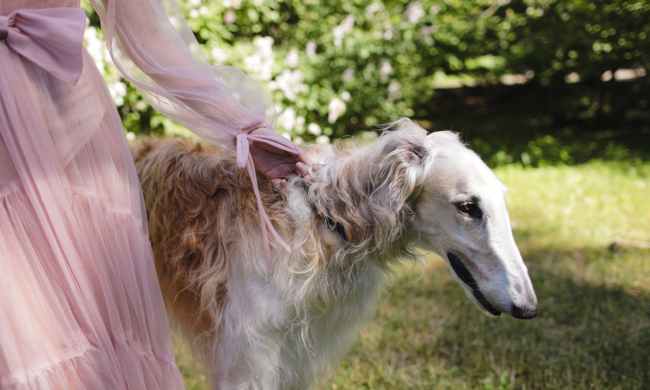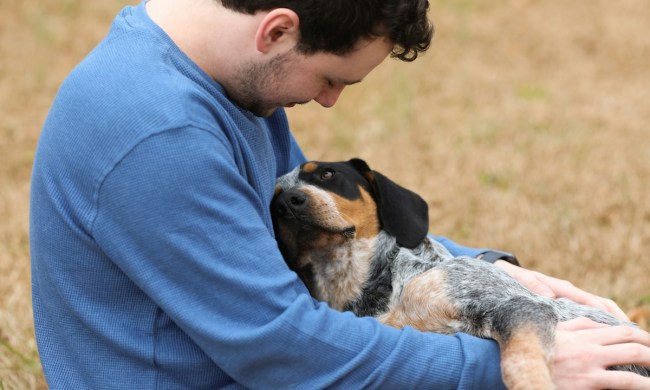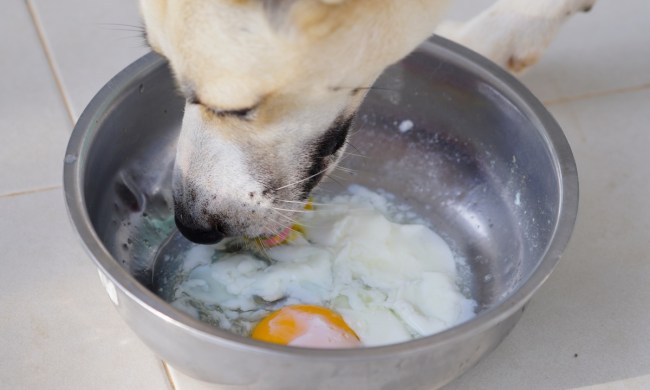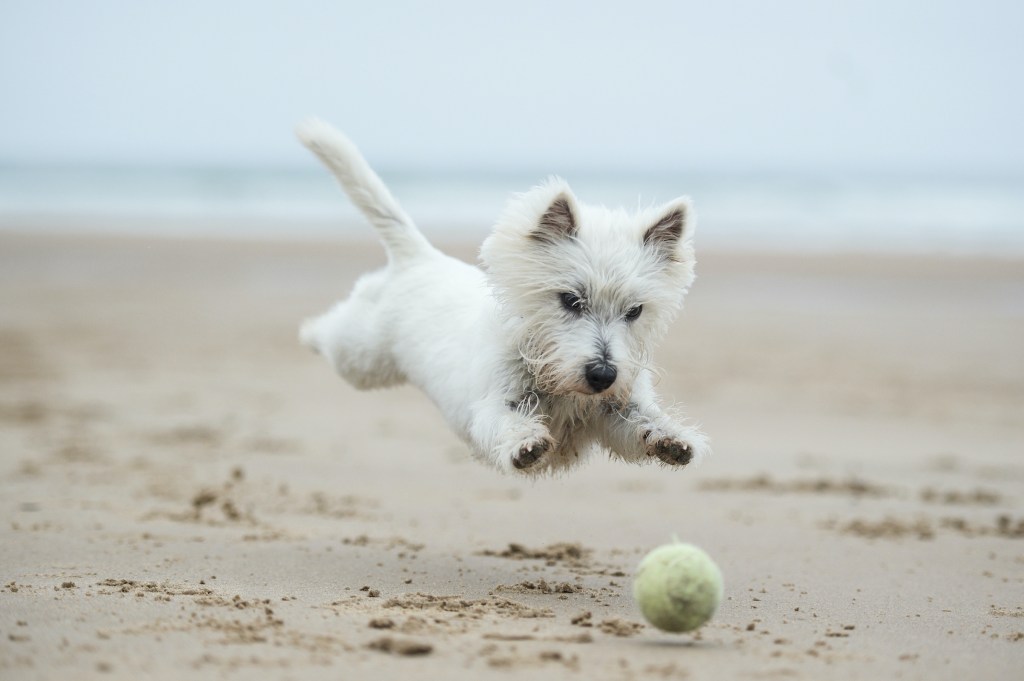
When you think about classic dog toys, tennis balls are sure to make the list. They’re a fun, cheap option that many pet parents can stock up on just as quickly as their dog goes through them, which is good news for pups who like to chew or fetch. Still — despite the balls’ everlasting popularity — more and more dog owners have stopped to wonder: Are tennis balls bad for dogs?
It can be difficult to guarantee the safety of any pet product, so you should pay special attention to your pup while he’s playing with anything you don’t completely trust. Better yet, you can even research the items your dog is playing with. This could, and perhaps should, include low-quality dog toys or any chew item not meant for canines — including tennis balls. Here’s what you need to know.

Should dogs play with tennis balls? Pros and cons of these popular dog toys
Although there are many pros to playing with tennis balls (they’re cheap, easy to find, etc.), they come with many risks you may not have considered. The team at Animal Dental Care and Oral Surgery — or Wellpets, as its site is named — has put together some helpful reminders about the silent dangers of tennis balls.
Tennis balls can harm your dog’s teeth with the “harmless” neon fuzz
Sandpaper on teeth is probably a good thing only at the dentist, and even then, it’s rarely pleasant. Dogs may not realize it while they’re having a blast, but the neon yellow fuzzy material that gives the tennis ball its grip will also microscopically grip onto the enamel of your dog’s teeth, causing a sandpaper-like effect (via Wellpets).
Over time, this can lead to an extra (and completely avoidable!) wearing down of your dog’s teeth. Since many dog breeds are also prone to dental problems, there’s no reason why they should be exposed to unnecessary damage like this. Instead, try out a ball that’s meant for dogs!
Accidents can happen: Your dog can choke on a tennis ball or its pieces
Despite its decent size, dogs can still choke on a tennis ball, whether whole or in pieces. If your pup can fit the whole ball in his mouth, he, unfortunately, can also ingest it. Since dogs have such a strong bite, they can squeeze the ball hard enough to split it open or shoot it back into the throat. This can lead to airway or intestinal blockage, both life-threatening.
Even small dogs who can’t completely hold tennis balls are at risk. It’s not difficult for them to strip off the ball’s yellow fuzzy coating, which can also become lodged in the mouth, throat, or intestines. Luckily, you’ve got safer options (see below) for your pup’s playtime.
Tennis balls may contain chemicals
Again, it’s important to remember that tennis balls are not designed as chew toys for dogs; they’re designed to be used in tennis. Because of this, there are no regulations when it comes to manufacturing tennis balls, so there’s no real way to know whether one brand is safer than another.
If you think tennis balls made for dogs are safer — think again. In fact, there are zero safety standards or manufacturing regulations for dog toys at all. Since the mid-2000s, pet parents have been finding concerning lead levels in mass-produced toys, such as tennis balls. Dog mom Nancy Rogers discovered one in her home that contained over 336 parts per million (ppm) of lead. In comparison, regulations require that children’s toys in the United States contain 100 ppm of lead or less (via CPSC).
It may seem counterintuitive, but researchers found that tennis balls made specifically for pets were more likely to contain toxic chemicals, including arsenic and chlorine. In fact, of all tennis balls tested in 2009 by the Michigan-based Ecology Center, every single one that tested positive for toxins was designed for pet use. Though the study has since been taken offline, many websites and pet resources were able to record and share the data before this happened sometime in 2022. Needless to say, this is worrisome.
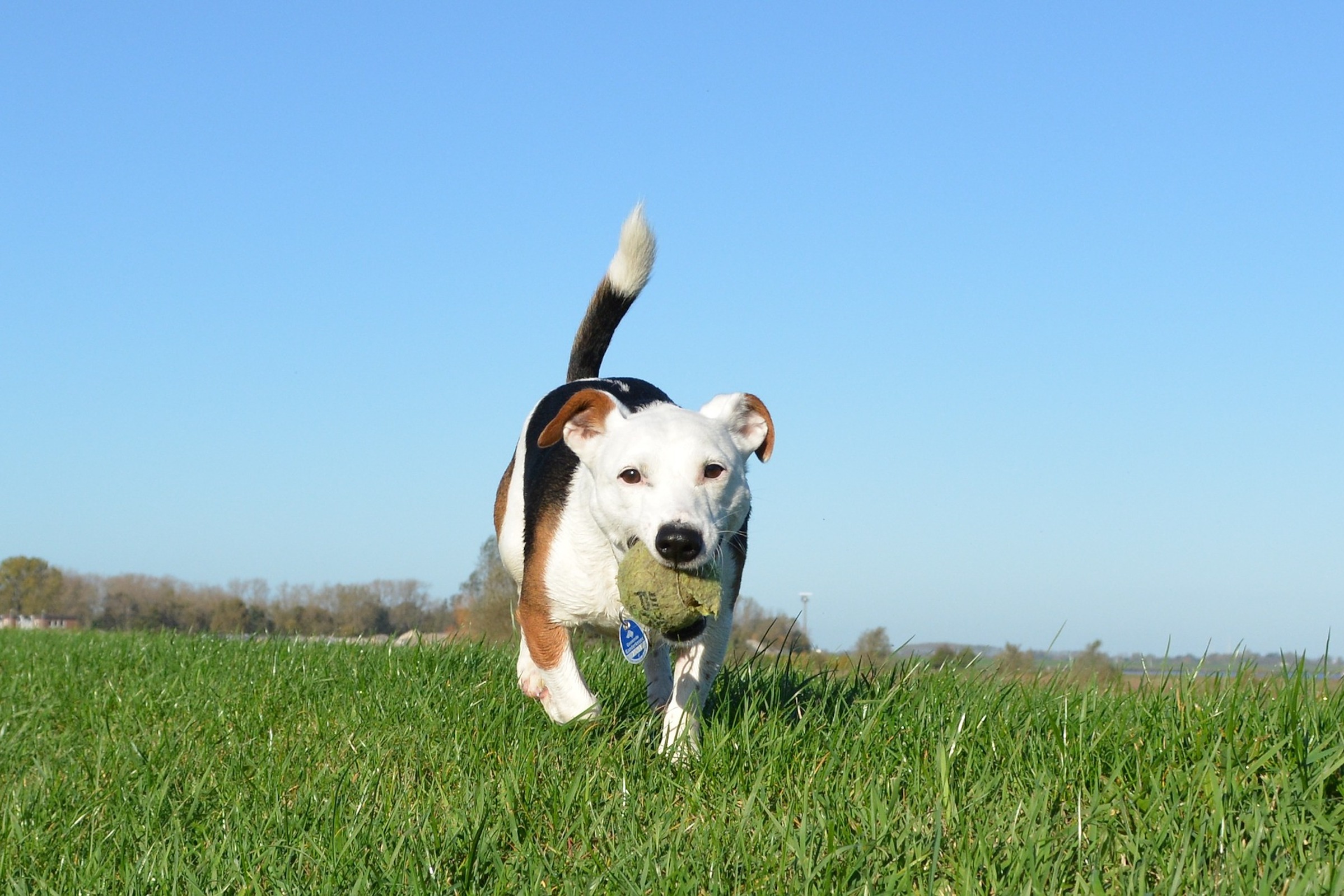
Alternatives to tennis balls that are both safe and fun for your dog
Now that you know the hidden risks of tennis balls, you have the power to make an informed decision when it comes to your dog’s toys. While there are still no safety regulations in place, some toys were found throughout studies to be chemical-free, including many made by large and trusted brands.
Try a NylaBone product if you’re looking for chew toys
When in doubt, try a treat rather than a toy. A large, frozen carrot can make a great teething tool for young pups or dogs who like to chew. As an option for a durable toy, the NylaBone DuraChew Double Action is equally satisfying and safe. This product tested negative for all chemicals during the 2009 study. This toy entices dogs with a bacon flavor and cleans their teeth as they chew. It’s a win-win!
To play fetch, try a different kind of dog ball
If your dog is a sucker for the classic tennis ball, Kong’s Squeakair balls might be the right bet. With their dog-safe felt, these balls won’t wear down your pup’s teeth like regular tennis balls can. Kong is also a well-known and reputable company that did not pop up as toxic on the Ecology Center’s site.
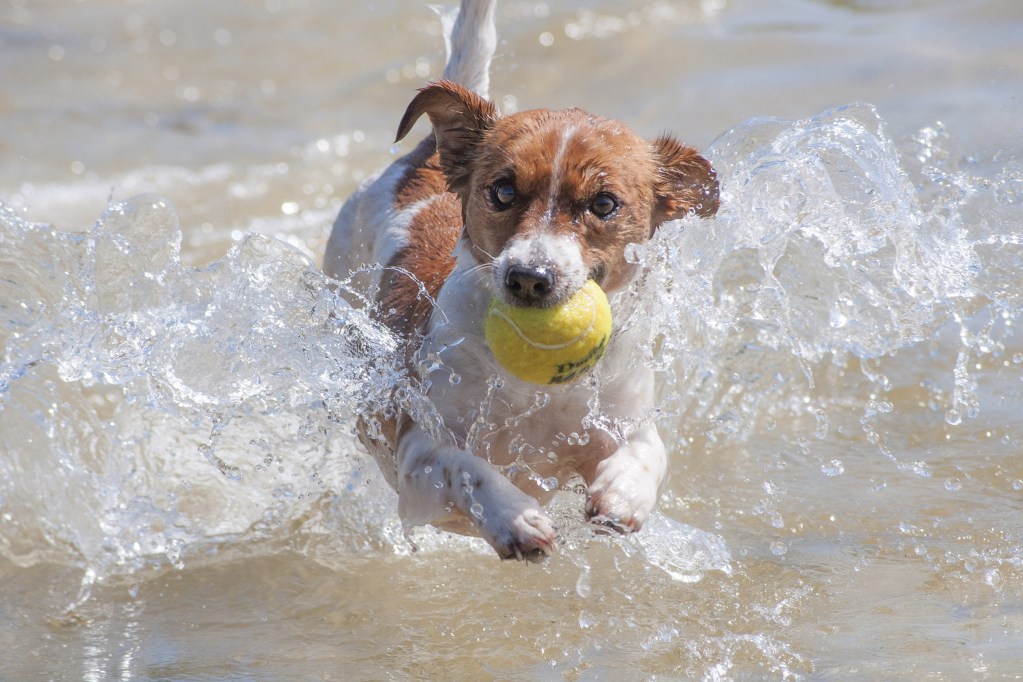
You can make a tennis ball safer in a pinch with these DIY dog toy tips
It’s hard to know what to do if you’re at the dog park with no other dog toys around. You wouldn’t want to take away your fur baby’s toy, but you really wouldn’t want to put them in harm’s way just for the sake of fun. Luckily, you just might have what you need to turn a tennis ball into something a bit safer.
If you have a sock, you’re good to go! By placing a tennis ball into a sock and tying a knot or two to keep the ball inside the cover, you minimize many of the risks that come with this popular toy. With longer socks, you’ll be able to play tug-of-war with the refurbished toy, too. You can also use scissors, car keys, or any sharp material to tear the sock into three long strips to make a braid to hold on to. Don’t be afraid to get creative, but do still keep an eye on your dog as they play. Sock fabric may be strong, but it still can be torn and ingested.
As concerning as the findings about regular tennis balls might be, don’t worry! You’ve got plenty of safe alternatives out there, and you can always ask your vet for their advice if you’re feeling stuck. If you’re unsure about any of your pet’s products or toys, you can also search for any tests they may have been part of by typing into the search box on the Healthy Stuff Reports page from the Ecology Center. Better safe than sorry, after all. Good luck, pup parents!

